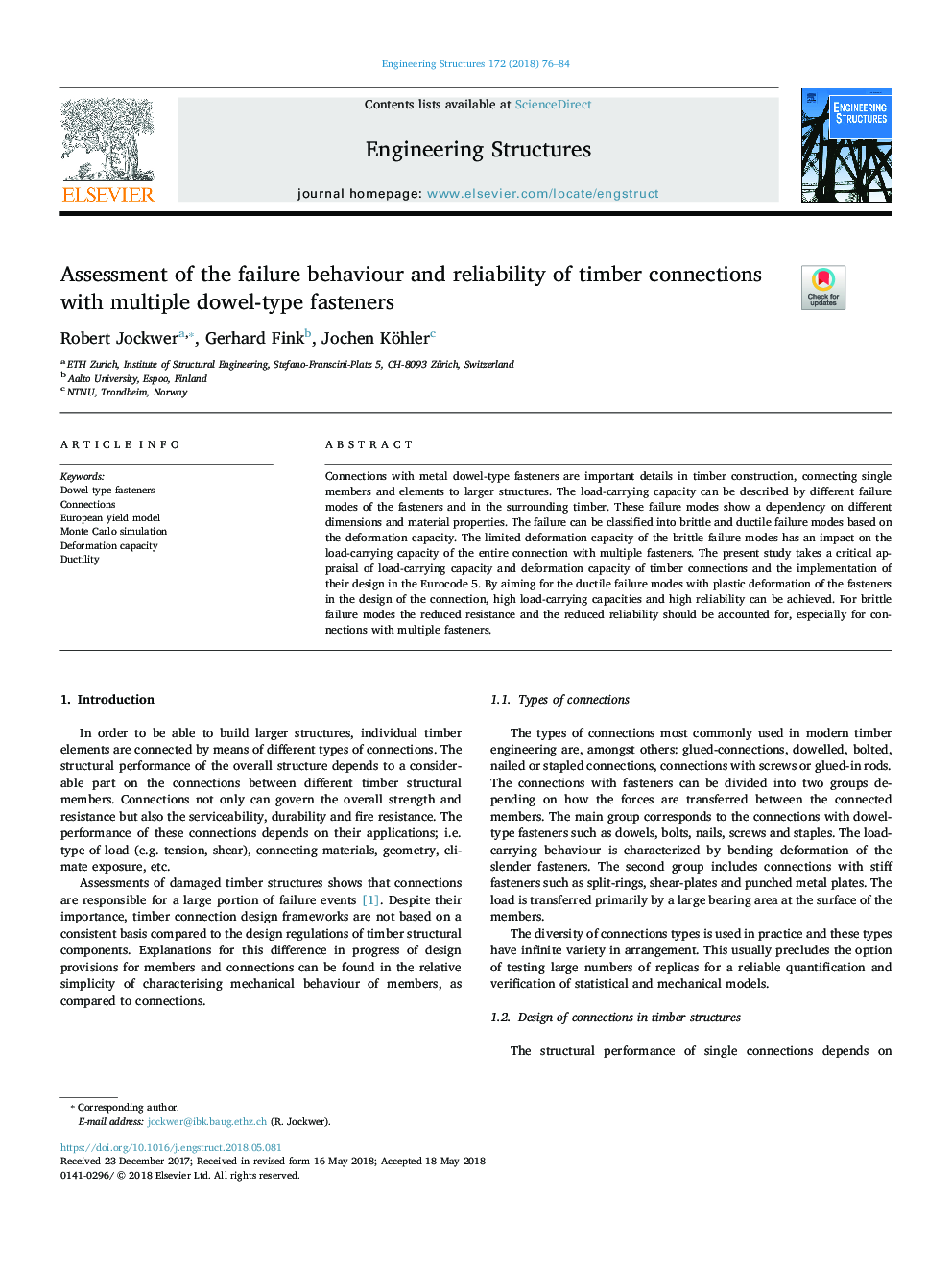| Article ID | Journal | Published Year | Pages | File Type |
|---|---|---|---|---|
| 6735890 | Engineering Structures | 2018 | 9 Pages |
Abstract
Connections with metal dowel-type fasteners are important details in timber construction, connecting single members and elements to larger structures. The load-carrying capacity can be described by different failure modes of the fasteners and in the surrounding timber. These failure modes show a dependency on different dimensions and material properties. The failure can be classified into brittle and ductile failure modes based on the deformation capacity. The limited deformation capacity of the brittle failure modes has an impact on the load-carrying capacity of the entire connection with multiple fasteners. The present study takes a critical appraisal of load-carrying capacity and deformation capacity of timber connections and the implementation of their design in the Eurocode 5. By aiming for the ductile failure modes with plastic deformation of the fasteners in the design of the connection, high load-carrying capacities and high reliability can be achieved. For brittle failure modes the reduced resistance and the reduced reliability should be accounted for, especially for connections with multiple fasteners.
Related Topics
Physical Sciences and Engineering
Earth and Planetary Sciences
Geotechnical Engineering and Engineering Geology
Authors
Robert Jockwer, Gerhard Fink, Jochen Köhler,
